White bloom on orchids: what is it and how to treat it?
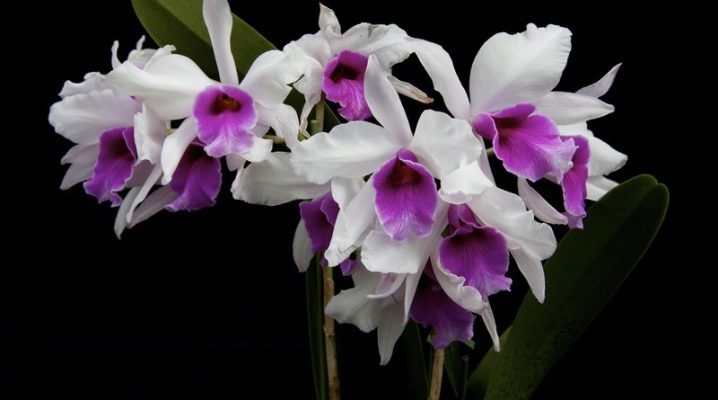
Regular and thorough inspection of orchids allows you to monitor their condition, timely identify problems associated with the invasion of pests and the development of diseases. Leaves can tell a lot about the state of plants. In healthy orchids, the leaves are dense and firmly attached to the stems. The appearance of strange spots or white bloom on the leaves is an alarming signal that requires immediate measures from the grower, providing for urgent treatment of the exotic.
Reasons for the appearance
The formation of white bloom on an orchid is a symptom indicating a fungal or parasitic infection of the plant. In the first case, the cause of the appearance of white bloom on the leaves is a disease called powdery mildew. In the second case, the occurrence of white plaque is due to the activity of a pest called a mealybug. If you find similar symptoms, the plant is subject to immediate isolation and requires proper treatment.

If the orchid is covered with a powdery coating that resembles talcum powder or flour, this indicates a fungal disease - powdery mildew.
As the disease progresses, the plaque becomes grayish and spreads to all parts of the plant. With neglected forms, plaque is formed not only on the leaves, but also on flowers, stems, flowering arrows, buds and roots.
In the event that the plant has been attacked by a mealybug, it begins to become covered with a sticky whitish bloom, similar to a thin cotton layer. Very often, traces of a sticky and viscous substance form on the trunk and other parts of the orchid - honeydew, which is a product of the pest's vital activity. Leaving behind this sweet, sticky secret on the stems, flowers and leaves, the pest contributes to the defeat of the plant by fungal diseases. To a greater extent, the problem is aggravated by the fact that the mealybug, feeding on the juices of the orchid, dooms it to a slow but sure death.
Other well-known pests that can lead to the formation of white bloom on an orchid are aphids and spider mites. Aphids, like the worm, produce a viscous whitish honeydew. The waste product of the tick, in turn, is a sticky web, which visually resembles a translucent film. Both parasites feed on plant juices, and their waste products create excellent conditions for the reproduction of pathogenic bacteria and fungi.
Plant breeders believe that the main reason for the formation of white bloom is improper care and lack of control over the condition of the plant. As a result of non-observance of the rules of care for exotics, immunity begins to decrease, ensuring their resistance to the development of diseases and attacks of pests. Orchids with reduced immunity are very quickly affected by a fungus or are exposed to an invasion of parasites, which, in the absence of full treatment, leads to the death of exotics.
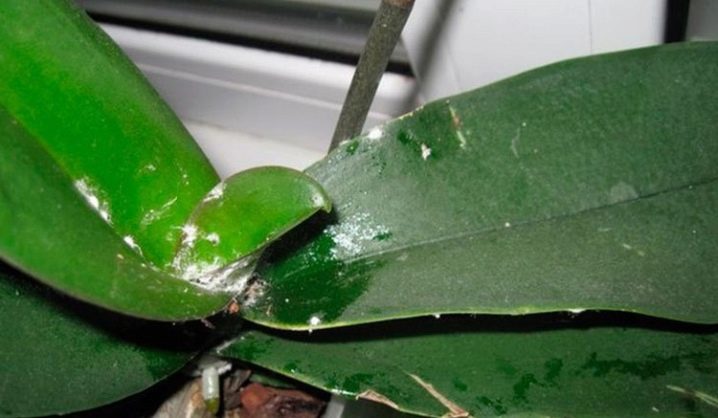
Among the main reasons due to which fungal plaque of fungal or parasitic origin appears on orchids, plant breeders distinguish such as:
- an excess of nitrogen in the substrate caused by a violation of the feeding regime;
- unsuitable level of air humidity;
- violation of the irrigation regime, waterlogging of the substrate;
- use of substandard or contaminated substrate.
Another reason that increases the risk of fungus or pests affecting the orchid is lack of proper care. So, leaving dry leaves, faded flowering arrows or flowers in a pot, an inexperienced plant grower may not even guess that they are a favorite habitat of not only pathogenic bacteria, but also many well-known pests. For this reason, the pots where orchids grow should always be kept clean.
Another reason why orchids are vulnerable to the formation of white bloom, experienced plant breeders call the genetic predisposition of hybrids due to the characteristics of the variety.

Given this factor, knowledgeable flower growers do not recommend beginners to start breeding orchids with capricious hybrids susceptible to diseases and pest attacks.
How does white bloom harm?
White bloom, caused by the defeat of the flower with powdery mildew, is a consequence and one of the symptoms of the disease. In fact, this plaque is a thin layer of mycelium - a parasitic fungus. After the spores mature, drops of liquid are formed on this layer, similar to dew drops (hence the name of the disease).
Actively multiplying, fungi begin to spread very quickly throughout the plant, penetrating into its tissues. As the fungus multiplies and spreads, the white bloom becomes denser and darker, which over time leads to the drying and death of the flower.
In the case when the white bloom is of parasitic origin, there is a serious threat of infection of the orchid with a sooty fungus, otherwise called black. The ideal breeding ground for the spores of this moldy fungus is honeydew - a product of the vital activity of mealybugs and aphids. This sticky substance creates excellent conditions for the active reproduction of colonies of sooty fungus, which clogs the pores in plant tissues, thereby disrupting the processes of photosynthesis. As the parasitic colonies grow, the orchid gradually begins to die. First, on the exotic, the leaves dry up and die, and then the plant dies completely.

How to deal with it?
The choice of methods for dealing with white bloom on an orchid should be based on the root cause of its appearance. If the plant is affected by powdery mildew, careful treatment must be carried out. antibacterial and antifungal drugs. The same agents (fungicides) are also used to destroy the sooty fungus.
If the orchid has been attacked by pests, it is required to use appropriate preparations (insecticides), which allow you to get rid of parasites. For the duration of treatment, an orchid affected by powdery mildew or pest infestation must be sure to isolate from healthy plants. Even under the condition of full and high-quality treatment, the infected exotic will remain a source of danger for other flowers.
Next, with an isolated plant, you need to do the following:
- carefully examine all parts of the orchid, including buds, arrows and roots;
- carefully remove all affected parts of the plant;
- process the cuts with crushed charcoal.
It is impossible to start treating an orchid affected by powdery mildew or parasites without first removing the affected parts. Infected or damaged leaves, buds, roots or peduncles, even with very good treatment, will remain a source of danger. All removed parts of the plant after cutting must be destroyed.
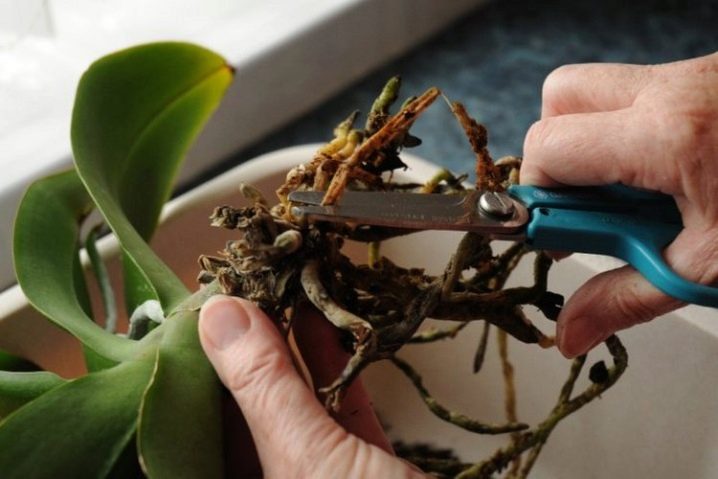
You can fight white bloom on orchids both by chemical means and by folk methods. The best results are achieved with an integrated approach that combines several treatment options.
By chemical means
Destruction of white plaque by chemical means provides for the use of drugs such as:
- 96% ethyl alcohol;
- hydrogen peroxide;
- potassium permanganate (slightly pink solution);
- ammonia.
These drugs have a powerful antibacterial effect, which makes it possible to effectively use them in the fight against fungus and white bloom on the leaves. To do this, in any of the presented means, moisten a cotton swab or disk, after which the affected plant is thoroughly treated. This procedure should be done regularly to prevent recurrence of the disease or re-invasion of parasites. After processing, the orchid is left for half an hour, and then washed with water at room temperature.
During the treatment of the plant it is important not to forget about the soil substrate, which must be replaced with a new one. Care must be taken to ensure that the new substrate does not show signs of pest infestation. In order to prevent it, it should be treated with a pale pink solution of potassium permanganate.
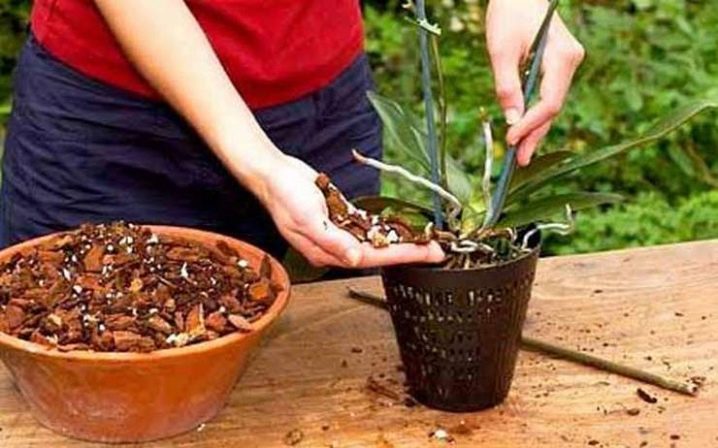
To combat the fungus that is the causative agent of powdery mildew, special fungicidal preparations should be used, such as:
- Fitosporin;
- "Quadris";
- bordeaux mixture.
It is necessary to use these drugs in strict accordance with the instructions. When handling plants, all safety precautions should be followed and protective gloves should be worn.
To destroy the pests that caused the formation of white bloom on the orchid, it is required to use special insecticidal preparations. The most effective are the following:
- Aktara;
- Fitoverm;
- "Confidor";
- "Decis".
Experienced flower growers also recommend treating the affected exotic plants with a special solution prepared from 150 grams of laundry soap and 5 grams of copper sulfate. The ingredients must be dissolved in a bucket of water and the plants must be carefully processed.
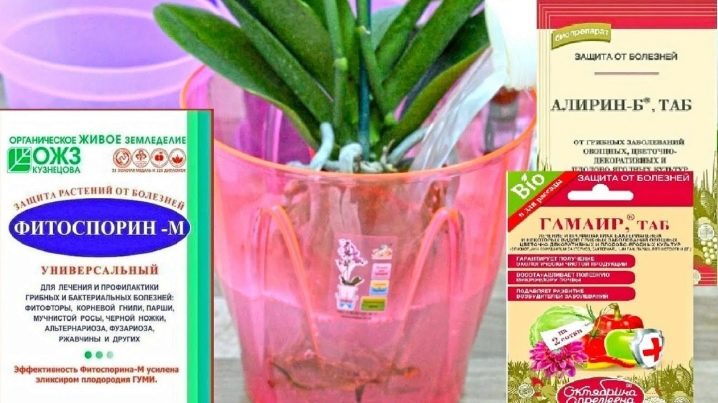
Folk methods
You can also fight white bloom on orchids using folk methods that will help to eliminate the problem more quickly. One of them involves the treatment of infected plants with alkaline and acidic solutions - for example, solutions of soda or citric acid. To prepare the solution, it is necessary to dilute 10 g of any of the presented means in one liter of water.
The resulting solution must be treated with all parts of the plant that have traces of damage. After processing, the orchid should be left in a warm room, protected from drafts and temperature changes.
Good results in the fight against white bloom are obtained by processing the plant regular beer. This procedure allows you to neutralize parasites, slow down the development of the fungus, and at the same time - give the leaves an attractive glossy shine.
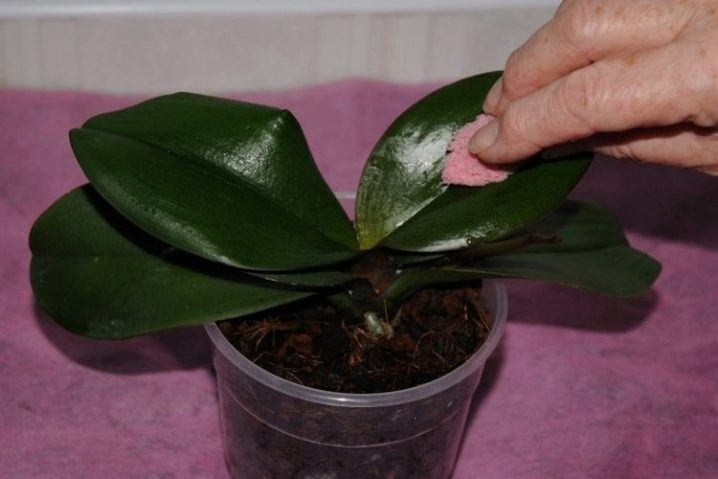
When resorting to folk methods, it should be remembered that it will not work to cure an orchid with home remedies alone. These methods are auxiliary, therefore, they do not replace the main treatment with fungicides or insecticides.
Prevention measures
To prevent powdery mildew or parasite infestation of the orchid, it is important to take care of its immunity. This is able to provide competent care. It provides for the observance of the regime of irrigation and feeding, ensuring the necessary air humidity and illumination.
Hypothermia of an orchid can also cause a decrease in its immunity. That is why it is very important to maintain a stable temperature in the room where exotic plants grow, to protect them from cold and drafts.
However, even with the best care, there is a risk of accidental infection of orchids with fungi or parasites. This often happens when buying a low-quality substrate, as well as when purchasing new plants. Given this, the substrate should be purchased only in trusted stores, and new orchids should be kept separate from the rest for some time. If during the quarantine on the exotic there is no suspicious plaque or stains, it can be moved to the rest of the flowers.
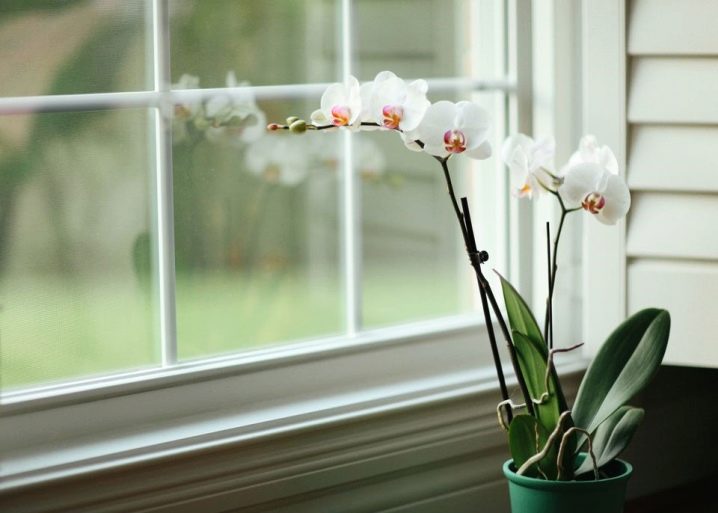































The comment was sent successfully.